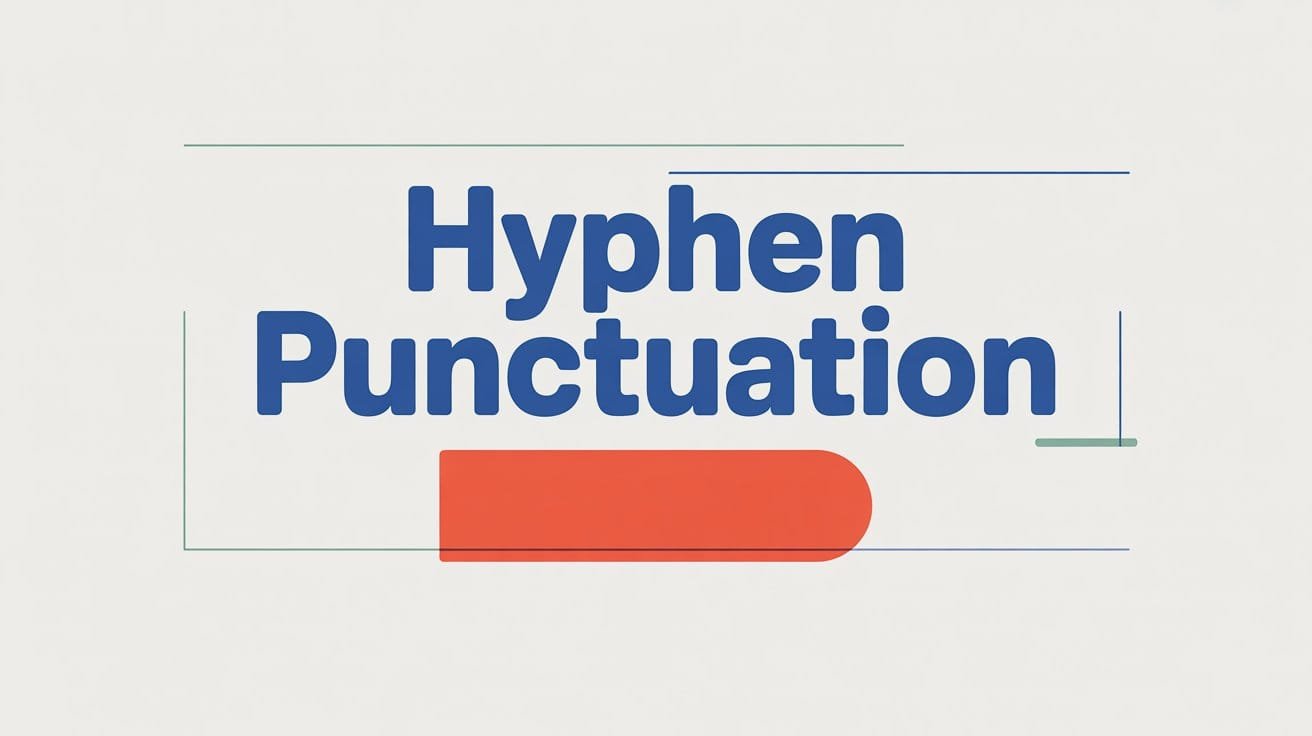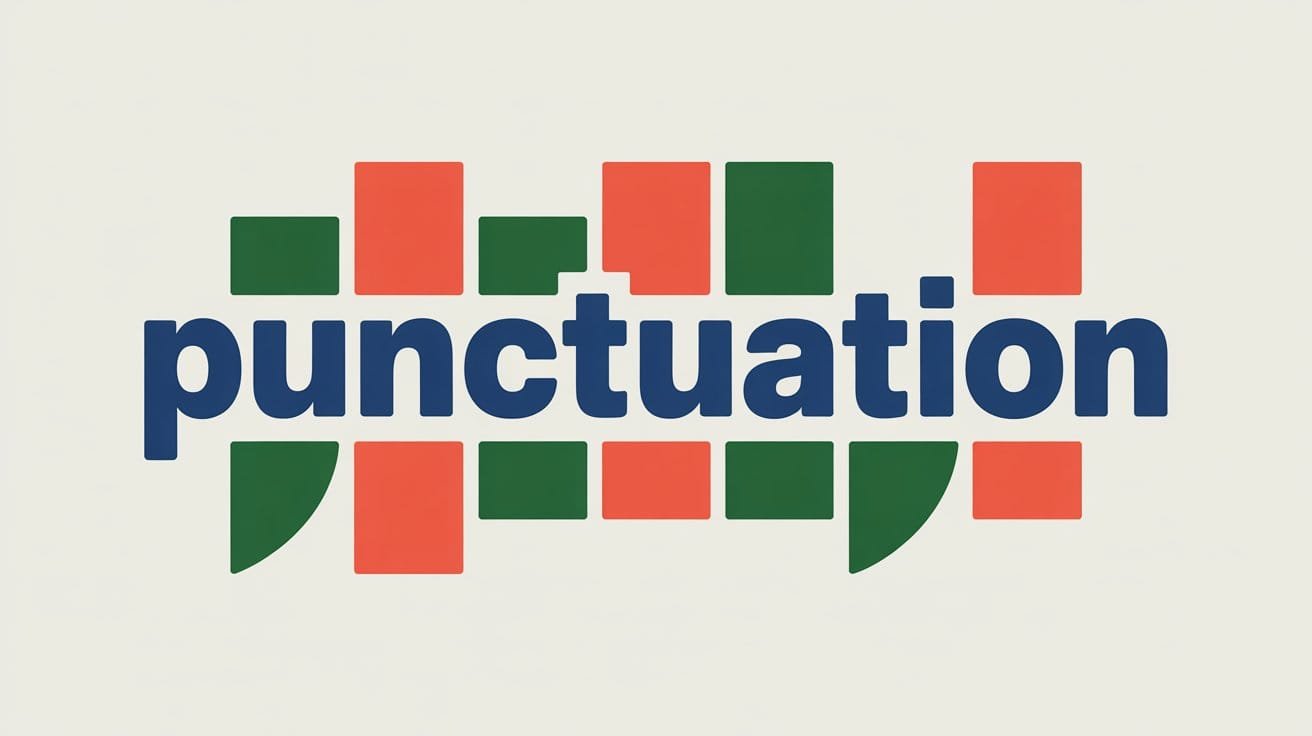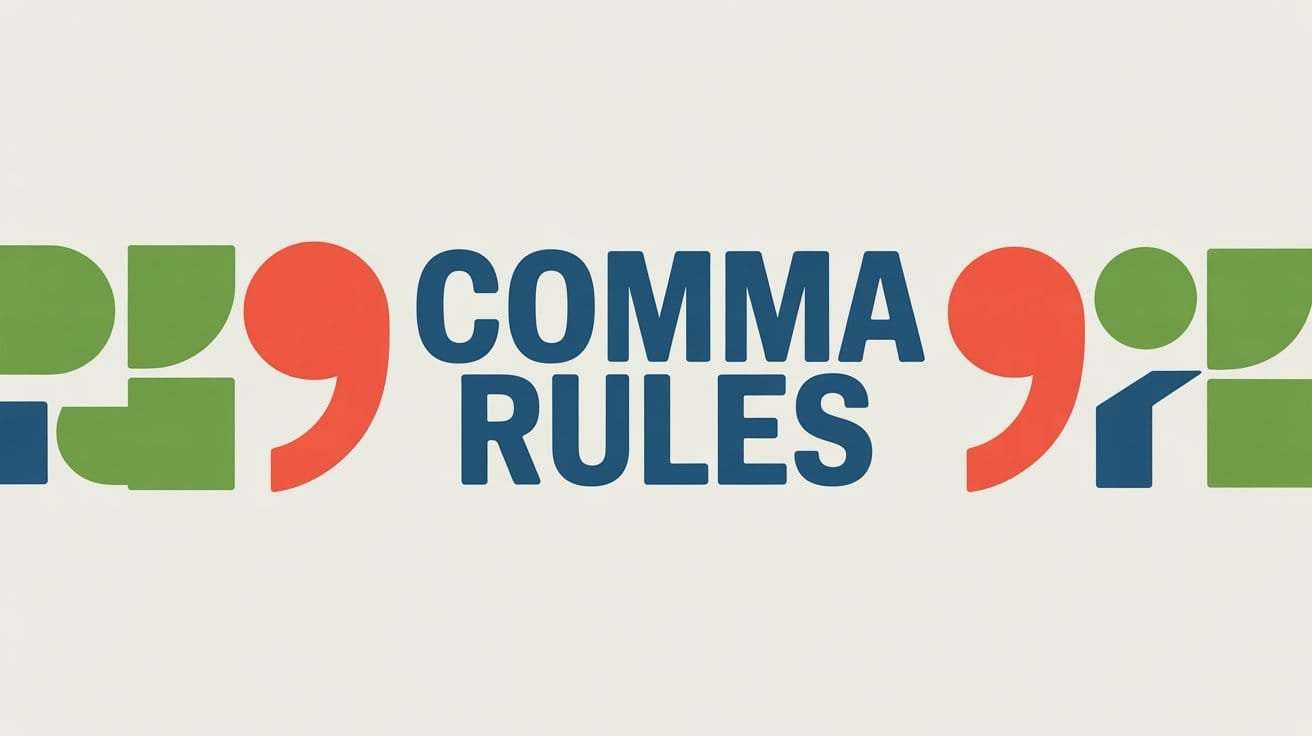The hyphen (-) is a small but powerful punctuation mark that connects words or parts of words. Despite its simple look, the hyphen can completely change the meaning when used or omitted in a sentence. For example, a small business owner and a small-business owner don’t quite describe the same thing.
Writers often confuse the hyphen with the dash, but they serve very different purposes. The hyphen links, while the dash separates. Learning when and how to use a hyphen correctly can make your writing more professional, accurate, and easy to read.
What Is a Hyphen?
A hyphen (-) is a short horizontal mark used to join words or parts of words. Its main purpose is to connect ideas closely related in meaning, making the sentence clearer and more precise. You’ll often see it in compound words, prefixes, or to prevent awkward breaks at the end of a line.
Examples:
- well-known author
- self-aware student
- part-time job
- re-enter the building
In each case, the hyphen helps the words function together as one idea. Without it, the meaning could be unclear or misread.
Main Uses of Hyphens in English Grammar
The hyphen has one main purpose: to connect words that belong together. It shows that two or more words work as a single idea, whether that idea describes something, forms a new noun, or links a prefix to a base word.
To Form Compound Words
Many hyphens appear in compound words, where two or more words join to express one concept. These can be compound adjectives, compound nouns, or compound verbs.
For example, when you say a well-known actor, the hyphen signals that well and known together describe actor. Without the hyphen (a well known actor), it could sound like two separate ideas.
Examples:
- high-quality materials
- long-term plan
- mother-in-law
- runner-up
- twenty-one
To Join Prefixes and Suffixes
Hyphens also connect prefixes to base words, especially when joining them avoids confusion or awkward spelling. For instance, re-cover (to cover again) is not the same as recover (to get better). The hyphen clarifies meaning.
You’ll often use hyphens with prefixes like ex-, self-, all-, and re- when:
- the word could be misread without one, or
- the prefix ends and the root begins with the same vowel.
Examples:
- ex-president
- self-motivated
- re-elect
- all-inclusive
- anti-inflammatory
To Avoid Ambiguity or Misreading
Sometimes, omitting a hyphen changes the entire meaning of a phrase. The difference between small business owner and small-business owner is subtle but important. The first might describe a business owner who is physically small; the second clearly refers to someone who owns a small business.
Examples:
- She’s a fast-moving editor. (An editor who moves quickly)
- She’s a fast moving editor. (Could imply “fast” modifies “moving editor” — less clear)
- They provide child-care services. (For children)
- They provide child care services. (Still correct, but less formal)
To Divide Words at the End of a Line
In printed or justified text, hyphens may divide a word at the end of a line. This use is purely visual, not grammatical, and is becoming less common in digital writing where line breaks adjust automatically. Although you won’t often need to do this online, it’s still common in books and newspapers.
Example:
- The results were so un-
expected that everyone paused.
Hyphen vs. Dash (Quick Comparison)
Writers often mix up hyphens and dashes because they look similar on the page. However, they serve very different purposes. A hyphen (-) connects words to form a single idea, while a dash—either an en dash (–) or an em dash (—) — separates ideas or adds emphasis. In other words, the hyphen joins, and the dash divides.
Hyphen ( – ): Connects words or parts of words.
Examples: well-known author, twenty-one, self-motivated
En Dash ( – ): Shows a range, relationship, or connection between values or ideas. The en dash is slightly longer than a hyphen and often replaces “to” or “through.”
Examples: 2001–2010, the New York–London flight, the student–teacher ratio
Em Dash ( — ): Adds emphasis, interruption, or contrast within a sentence. The em dash is the longest of the three, and creates a stronger break in thought.
Examples:
She wanted to call—but hesitated.
I’ll meet you at the station—if it doesn’t rain.
He was confident—too confident, perhaps.
Using Hyphens in Compound Words
Hyphens appear most naturally in compound words. But not every compound word needs one, and that’s where many writers get confused.
To use hyphens correctly, you need to look at how and where the compound appears in a sentence.
Compound Adjectives Before a Noun
When two or more words work together to describe a noun, they form a compound adjective, and a hyphen helps keep the meaning clear. Without it, the description can be misread.
Examples:
- It’s a high-speed train.
- She gave a last-minute reply.
- We stayed in a five-star hotel.
- The teacher gave a well-organized presentation.
If the adjective comes after the noun, you usually don’t need the hyphen:
- The train is high speed.
- The presentation was well organized.
This simple shift changes the grammatical relationship and removes the need for a hyphen.
Permanent vs. Temporary Compounds
Some compounds have become permanent parts of English and are always written with hyphens or without them. Others are temporary, created by writers to clarify meaning in specific contexts.
Permanent compounds:
- mother-in-law
- editor-in-chief
- self-esteem
Temporary compounds:
- energy-efficient device
- customer-first approach
- data-driven strategy
Temporary compounds are flexible and help express new ideas clearly, even if they aren’t in dictionaries yet.
Hyphens That Disappear Over Time
Language evolves, and so does punctuation. Many words that once used hyphens are now accepted as single words. The shift often follows usage patterns. Once a compound becomes familiar, the hyphen fades.
Examples:
- e-mail → email
- on-line → online
- web-site → website
This doesn’t mean hyphens are less important. It means writers use them as tools to guide clarity, not as fixed rules.
Hyphens with Prefixes and Suffixes
Hyphens play an important role when joining prefixes and suffixes to base words. They keep meaning clear, prevent confusion, and make unfamiliar words easier to read. While many prefix combinations are now written without hyphens (like email or preview), there are still several cases where the hyphen remains necessary.
When a Prefix Causes Confusion Without a Hyphen
Sometimes, a prefix can create a word that looks or sounds like a different word if written without a hyphen. In those cases, the hyphen prevents misreading.
Examples:
- re-cover (to cover again) vs. recover (to regain)
- re-sign (to sign again) vs. resign (to quit)
- co-op (a cooperative) vs. coop (a cage for birds)
The hyphen ensures the intended meaning is clear at first glance.
When the Prefix Ends and the Base Word Begins with the Same Vowel
If a prefix ends in the same vowel that starts the base word, a hyphen helps avoid awkward repetition and keeps the word readable.
Examples:
- re-enter
- pre-existing
- anti-inflammatory
- co-owner
Without the hyphen, words like reenter or coowner would look confusing and unnatural.
With Certain Prefixes That Traditionally Take Hyphens
Some prefixes are almost always hyphenated in standard English because of long-standing convention or for visual clarity.
Common examples include:
- self- → self-aware, self-employed, self-confidence
- ex- → ex-president, ex-roommate, ex-employee
- all- → all-inclusive, all-knowing
- cross- → cross-examine, cross-reference
These forms are so familiar that removing the hyphen would look incorrect to most readers.
Hyphens with Suffixes
While suffixes are less likely to need hyphens, a few cases still appear—especially with the suffix -elect or when clarity demands it.
Examples:
- president-elect
- secretary-general
- editor-in-chief
In these expressions, the hyphen connects multiple elements that act together as one unit of meaning.
When it comes to prefixes and suffixes, the goal is readability before rule. If the word looks confusing or awkward without a hyphen, include one. Hyphens make complex combinations smoother and easier to understand.
Avoiding Ambiguity with Hyphens
One of the most important uses of the hyphen is to remove ambiguity — making sure a sentence means exactly what you intend. A missing hyphen can change the interpretation, even if the words are spelled correctly.
Preventing Awkward or Misleading Phrases
Without a hyphen, the relationship between words can easily shift or confuse. The goal is always to lead readers toward the intended meaning.
Examples:
- fast-moving vehicle (a vehicle that moves quickly)
- fast moving vehicle (could suggest “fast” describes “moving vehicle” as two separate ideas)
- man-eating shark (a shark that eats humans)
- man eating shark (a man eating a shark — very different meaning!)
In each case, the hyphen ensures precision and saves the reader from guessing.
Creating Smooth Flow in Long Modifiers
Hyphens also help long or complex modifiers read naturally. When multiple words describe one noun, they guide the reader to interpret them as a single unit.
Examples:
- state-of-the-art equipment
- once-in-a-lifetime opportunity
- low-cost, high-efficiency model
These phrases are easy to process because hyphens clearly group the descriptive parts.
Hyphens might seem small, but their impact on clarity is huge. A well-placed hyphen can be the difference between a polished, professional sentence and one that’s confusing or unintentionally funny.
Quick Reference Table — Hyphen Rules at a Glance
| Use | Explanation | Example |
|---|---|---|
| Compound adjectives | Join two or more words that describe a noun. | high-speed train, well-known artist |
| Compound nouns | Link words to form a single concept. | mother-in-law, check-in, runner-up |
| Prefixes | Use a hyphen to avoid confusion or double vowels. | re-enter, ex-president, self-aware |
| Avoiding ambiguity | Clarify meaning or prevent misinterpretation. | small-business owner vs. small business owner |
| Word division | Divide long words at the end of a printed line. | The meeting was un- expected. |
| Numbers and fractions | Connect parts of compound numbers and fractions. | twenty-one, two-thirds |
Frequently Asked Questions (FAQs)
What is the main purpose of a hyphen?
A hyphen connects words or parts of words to form a single, clear idea. It’s most often used in compound words, prefixes, and modifiers. For example, well-known author or self-motivated student.
Is there a space before or after a hyphen?
No. A hyphen should always be placed directly between words without spaces on either side.
Correct: high-speed train
Incorrect: high – speed train
What’s the difference between a hyphen and a dash?
A hyphen (-) connects words (part-time job), while a dash (– or —) separates or emphasizes ideas (She was late—but calm). Hyphens are shorter and serve a linking purpose, while dashes create pauses or contrast.
Do all compound words need a hyphen?
No. Many compound words evolve over time — e-mail became email, on-line became online. When in doubt, check a reliable dictionary. Use a hyphen if removing it makes your meaning unclear.
When should I use a hyphen with prefixes?
Use a hyphen if:
The prefix ends with the same vowel the base word starts with (re-enter, co-owner).
The word looks confusing or could be misread (re-cover vs. recover).
The prefix is self-, ex-, all-, or cross- (self-aware, ex-president, all-knowing).
Is it correct to hyphenate compound numbers and fractions?
Yes. Always hyphenate compound numbers from twenty-one to ninety-nine and spelled-out fractions.
Are hyphens used in formal writing?
Yes. In fact, hyphens improve clarity in academic, professional, and formal writing. They prevent ambiguity and make compound terms easier to read.



